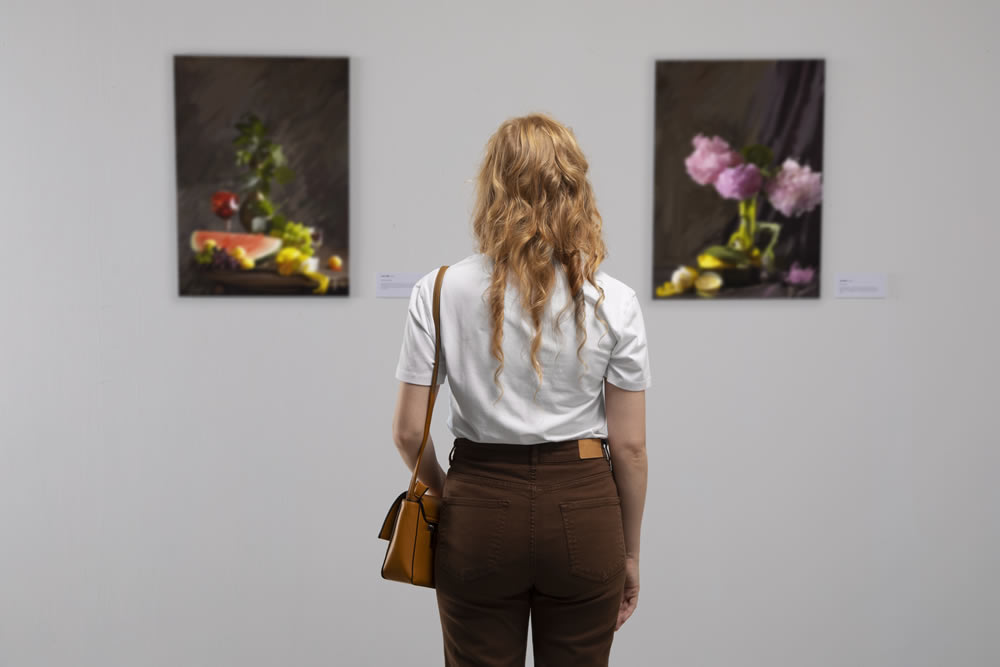The digital transformation of art exhibitions signifies a new era for artistic display, opening up unprecedented opportunities for artists and audiences alike. According to a study published by the Art Basel and UBS Global Art Market Report, online sales of art doubled in 2020, accounting for a record 25% of the total market value. This surge demonstrates the growing acceptance and demand for digital platforms as viable venues for experiencing and purchasing art. With this shift, art exhibitions are evolving, leveraging technology to reach a wider audience and create immersive experiences that were previously unimaginable.

Digital Tools and Platforms Elevating Art Exhibitions
The integration of digital tools into art exhibitions is opening new avenues for artists and curators to showcase their work. These technologies are enhancing the visual and interactive aspects of exhibitions, creating more engaging and immersive experiences for visitors. From virtual reality (VR) installations that transport viewers to another world, to digital catalogs that provide in-depth information about each piece, the possibilities are endless.
Some of the key technologies transforming art exhibitions include:
- Virtual Reality (VR) and Augmented Reality (AR) for immersive viewing experiences.
- Online galleries and digital catalogs, making art accessible from anywhere.
- Interactive installations that engage visitors through touch, sound, and motion.

QR Codes: A Vital Component in Modern Art Exhibitions
Among the various digital innovations, QR codes have emerged as a particularly influential tool in modern art exhibitions. These simple yet powerful codes are bridging the gap between the physical and digital worlds, offering a new layer of interactivity and information to the art exhibition experience.
QR codes can enhance visitor engagement by providing instant access to a wealth of information about the artwork, including artist biographies, creation processes, and even audio guides. This not only enriches the visitor’s experience but also allows for a deeper connection with the art.
Notable implementations of QR codes in art exhibitions include:
- Museums embedding QR codes next to artworks, linking to detailed information and interactive content.
- Art galleries using QR codes to facilitate the purchase of artwork, connecting visitors directly to online sales platforms.
- Exhibition organizers integrating QR codes into promotional materials, offering previews or additional information about the exhibition.
The role of QR codes in modern art exhibitions is a testament to the ongoing digital transformation in the art world. By making exhibitions more interactive and informative, QR codes are enhancing the way we engage with art, ensuring a more meaningful and accessible experience for all visitors.

Advantages for Artists and Audiences in the Digital Shift
The digital shift in art exhibitions is proving beneficial not just for audiences but also for artists. For artists, the primary advantage is the opportunity for wider visibility. Digital platforms and tools break down geographical barriers, allowing artists to reach a global audience. Furthermore, innovative presentation methods offered by digital technology enable artists to express their work in new and dynamic ways, often leading to deeper audience engagement and appreciation.
For audiences, the benefits are equally compelling. Digital advancements have made art more accessible, allowing people from all corners of the world to explore exhibitions they otherwise might not have been able to visit. Additionally, digital tools enrich the engagement with art, offering interactive experiences and a wealth of information at the viewer’s fingertips.
Benefits for both artists and audiences include:
- Global reach for artists and accessibility for audiences.
- Enhanced presentation methods, allowing artists to explore new forms of expression.
- Interactive and immersive experiences for audiences, leading to deeper engagement with art.
Navigating Challenges in Digital Adaptation
While the digital transformation of art exhibitions presents numerous opportunities, it also comes with its share of challenges. One significant obstacle is maintaining the sensory and emotional impact of experiencing art in person. Digital displays can sometimes fail to capture the intricacy and texture of physical artwork, potentially diluting the viewer’s experience.
To overcome these challenges, exhibition organizers are employing a blend of strategies. They are developing high-resolution and 3D imaging technologies to better replicate the physical presence of artwork. Furthermore, by combining digital elements with physical exhibitions, they create a hybrid experience that leverages the best of both worlds, ensuring the integrity of the art experience is preserved.
Strategies for overcoming digital adaptation challenges include:
- Investing in high-quality digital replication technologies.
- Creating hybrid exhibitions that incorporate both digital and physical elements.
- Focusing on the curation of digital content to ensure it complements rather than overshadows the artwork.
Spotlight on Successful Digital Art Exhibitions
Several art exhibitions have successfully integrated digital technology, setting a benchmark for others to follow. A notable example is the use of QR codes in the Van Gogh Museum in Amsterdam, where visitors can scan codes next to paintings to access in-depth information about Van Gogh’s life, techniques, and the stories behind his artworks. This not only enriches the visitor experience but also deepens their connection with the art.
Another example is the British Museum‘s use of digital technology to create an interactive exhibition experience. Through a combination of AR applications and QR codes, visitors can explore ancient artifacts in detailed 3D, gaining insights into their historical context and significance.
Key insights from these successful digital art exhibitions include:
- The effective use of QR codes to provide additional content and enhance visitor engagement.
- The integration of AR and other digital technologies to create immersive and interactive experiences.
- The importance of a seamless blend of digital and physical elements to maintain the integrity of the art experience.
These examples underscore the transformative potential of digital technology in art exhibitions, offering valuable lessons in how to effectively utilize these tools to benefit both artists and audiences.
Assessing the Impact of Digitalization on Art Exhibitions
The assessment of digitalization’s impact on art exhibitions involves a multifaceted approach, focusing not only on quantitative metrics such as increased visitor numbers or online engagement rates but also on qualitative feedback from artists and visitors. Gathering insights into how digital elements enhance or detract from the art exhibition experience is crucial for refining and improving future digital integration.
Key approaches for evaluating the effectiveness of digital elements include:
- Conducting surveys and interviews with visitors to collect feedback on their digital experience.
- Analyzing social media engagement and website traffic to measure the reach and impact of digital exhibitions.
- Collaborating with artists to understand their perspective on digital presentation methods and their impact on the artistic intent.
Collecting and analyzing this data enables exhibition organizers to understand the value and effectiveness of digital elements, ensuring that future exhibitions are not only technologically advanced but also meaningful and engaging for all stakeholders.
Creative Expression in the Digital Age: Tools for Artists
Digital technology has significantly expanded the toolkit available to artists, offering new avenues for creative expression and experimentation. Digital platforms and tools enable artists to explore innovative formats, from digital painting and 3D modeling to virtual reality and augmented reality experiences. This evolution is transforming the relationship between digital technology and the creative processes in art, fostering a new era of artistic innovation.
Key aspects of digital technology’s role in artistic expression include:
- The democratization of art creation and distribution, with digital platforms allowing artists to share their work with a global audience.
- The emergence of new art forms and genres facilitated by digital tools, such as digital installations, interactive art, and NFTs (Non-Fungible Tokens).
- The potential for collaborative creation across geographical boundaries, with digital tools enabling artists to work together in virtual environments.
The evolving relationship between digital technology and art is not only providing artists with new tools for expression but also challenging traditional notions of art and its consumption. As artists continue to explore the possibilities offered by digital technology, the art world is set to witness further innovation and transformation in the ways art is created, exhibited, and experienced.










